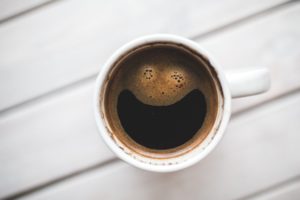The application of novel brain stimulation techniques to treat depression, physical (or “somatic”) pain, and/or other neuropsychiatric (psychiatric & neurological) disorders, is a new and rapidly growing field. These include transcranial low voltage electrical stimulation (tES) and transcranial magnetic stimulation (TMS).
The Good:
These techniques are emerging as promising approaches because of their relative ease of use, safety, and dual neuro/biological effects. TMS appears to be more potent than transcranial low voltage electrical stimulation.
The Bad:
Unfortunately, TMS is limited by the need for a substantial period of rigorously scheduled treatments (daily for 4-6 weeks), which can create a significant human burden in terms of delayed onset of relief, time, and money.
The Ugly:
These limitations often result in poor patient participation (“compliance”). Even when we accelerate the process by treating more times per day (rTMS), the outcomes may be less than satisfying. Although some of the inconvenience is improved by this acceleration, the response and complete symptom improvement (“remission”) rates achieved are about the same.
The “Details”:
The use of regular (“conventionally applied”) rTMS has been sometimes reported to produce a significant response in 41% of patients (IDS-SR* outcome) and remission in 24%–29 % of patients (IDS-SR* outcome). The same application of rTMS was reportedly somewhat less effective in treating severe depression. Treatment “resistance” of the illness (not necessarily due to patient effort!!) is an important factor in predicting the likelihood of response to rTMS. Sadly, the more resistant a patients’ illness has been to well-applied medication management, the less likely that rTMS will be helpful. Because of this finding, conventional rTMS has been positioned as a treatment for people who have not responded to only one adequate trial of medication. In the form in which it is typically available in the USA, rTMS is not currently seen as a treatment for people with multiple treatment “failures.” Nevertheless, rTMS has been found to have beneficial effects on overall brain function in experimental studies both in individuals who are ill as well as in those who are “well.”
More Invasive Options:
Beyond external neuromodulation sits a more intrusive set of brain stimulation techniques that includes VNS (Vagus Nerve Stimulation), and DBS (Deep Brain Stimulation). Both require surgical placement of electrodes and pulse generators.
A variant of TMS, “deep TMS” was recently approved by the U.S. Food and Drug Administration because it was apparently capable of causing a significant response in 36.7% of patients in treatment-resistant depression, compared with a response rate of 20.5% in the control group, and causing remission in about 30.4% of patients with treatment-resistant depression compared with a remission rate of 14.5% in the control group. Unfortunately, this means antidepressant medications and commonly used neuromodulation protocols appear to be about as effective as the so-called “placebo” response of approximately 40%.








